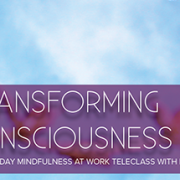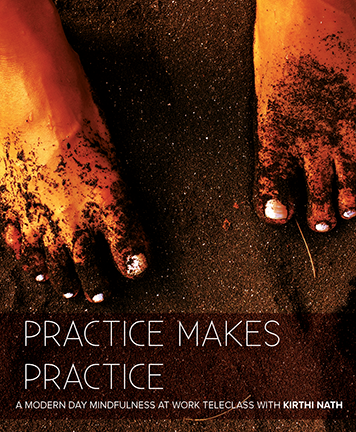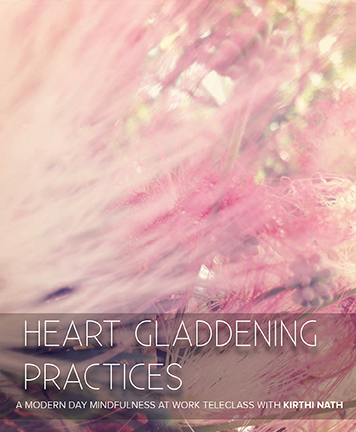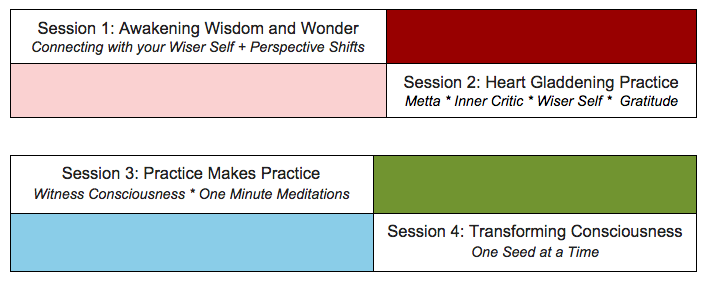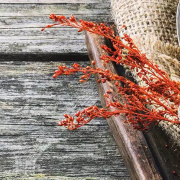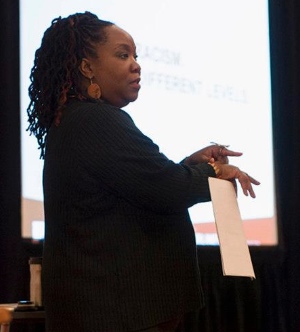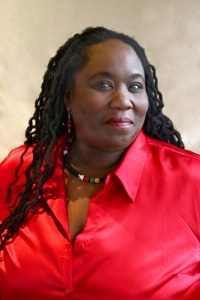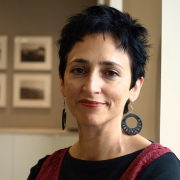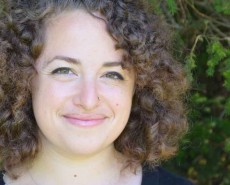Calling Heart-Based Movers and Shakers Behind the Scenes: Modern Day Mindfulness at Work Workshop
The gift of a calling is that it asks you to listen deeply to awakening, to face your inner critic with humble curiosity and to trust a process that will ultimately allow you and your community to grow in ways you had not imagined possible. Exquisite!
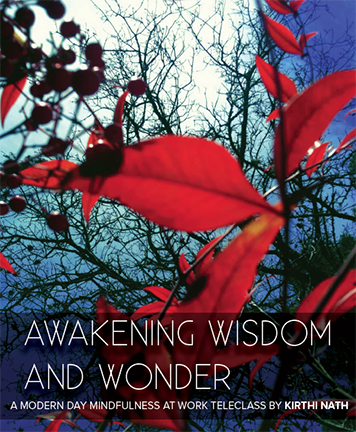 Listen, Love, Leap
Listen, Love, Leap
Modern Day Mindfulness at Work was first offered as a pilot workshop, sponsored in part through a EAP Made grant. It took the form of intimate “virtual tele-class” professional/personal development sessions, workshop style, created and led by me, Kirthi Nath. Modern Day Mindfulness at Work was created for heart-based movers and shakers interested in exploring spiritual mindfulness practices as a foundation for purpose-based livelihood and self-care. Core to the workshops were experiential meditation and creative presencing tools sourced from a variety of traditions — Buddhism, Tantra, Yoga. The workshops also included space for practice, reflection, and sharing. We met every Wednesday from 9-11 am via conference call for four weeks between January 14-February 4, 2015.
Despite my experience as a teacher, vision for the workshop, and background with the topic, I had doubts. Are there other heart-based movers and shakers who are spiritual and curious how these practices can support them professionally and personally? Is it ok to say the word “spiritual”? Would people have enough attention and bandwidth to be present for a workshop mid-week, first thing in the morning? Are the meditations I want to share too wild or too fill in the blank? Sometimes they can veer towards epic sensory spiritual adventures, other times they stay focused in breath, and I wondered how they would be received. Clearly, my inner critic had plenty to say. Instead of trying to push this away, I listened. My wiser self also had a vision — one that wanted to talk candidly about leading from love, intention and values, one that wanted to co-create opportunities to play and invite in magic, one that wanted to sign weekly emails with the salutation ‘love’. Instead of trying to push this away, I listened. To all voices. The dance with inner critic and wiser self: listening, letting go and letting be…LISTEN, LEAP, LOVE.
Creating Quiet in the Morning
Have you ever woken up and felt anxious? Do you check your gadget first thing? Have you noticed how even a simple email causes stress? If we take a breath, we can see and witness how the stress we feel is out of scale with reality. Yet we all feel the stress. I know I have.
We live in a world of digital connectivity and addiction to stress. Yet, we want calm. We want creativity. We want to thrive.
When I first proposed holding my workshop in the morning, I may have been shooting myself in the foot. So many of us wake up with these habits that stress us out. We feel we need to start working first thing. The truth about work is that we’re more productive when we are present.
I recently co-produced a film interview with Annette Richardson, senior advisor at the United Nations for Partnerships. All day she interacts with hundreds of people and makes high-level, life changing decisions. When exploring success and self-care practices, she shared her key to “success”. She has a morning ritual to give herself time to wake up, free of stimulation from outside voices, emails and external distractions. In the morning she takes space for herself, to be quiet, so she can be present and available throughout the day to listen, interact and make decisions that come from a grounded place.
It makes a huge difference to allow time for quiet in the morning, space for ourselves in the morning. For visionaries, this can be hard to do. It’s one thing to be told that this is good thing, that this will help you thrive. It’s another to experience and explore for yourself. I always say: don’t believe me, try it out for yourself. So we held the workshop in the morning, mid-week.
Morning was a good time for me! I did the workshop from home, with my morning tea. Mornings are easier for me. In the afternoon, something else often comes up to knock aside things like this. ~ Jessica
We began every session invoking the magic of rituals. Each call started with a mudra meditation. We combined a mudra (hand held gesture) and a mantra (words repeated during meditation) as a way to quiet the mind and come together as a community. Throughout the course, we explored various meditations and creative presence tools via a mixture of lecture, experiential meditation, reflection, soul inquiry and share.
From this workshop, I’m grateful for and still use the perspective shifts and ask myself often, what I am grateful for. The ‘creative presence tool’ and gratitude practice allows me to take a step back from my work and not become too frazzled with what is going on around me. ~ Dorothy
Practice Makes Practice
I applied for the EAP MADE grant because I appreciated EAP’s focus on regenerative practices and modeling of racially diverse leadership voices. I wanted to share this workshop because I have experienced first hand the gifts of spiritual practice in my work and personal life. I offered this specific wisdom workshop because I was frustrated with the dominance of whiteness in Westernized wisdom teachings and wanted to be part of the expansion of diverse voices. I thought it was important to invite more people of color to be part of the conversation — as leaders, co-creators and also part of the ever growing cultural library of resources referenced and passed on.
When I first met Michelle, my EAP Project Facilitator, she asked me, “How can this experience support you? We trust what you offer will be of benefit for the community, so let me know how we can support you”. I was taken aback, so I was honest. I asked for an extension for the workshop start date so I could go on spiritual retreats.
In October I went on a 7-day silent Metta retreat and in December I went to Hawaii for 7-days and swam, looking into the sky chanting metta phrases every day.
I share this because I almost didn’t.
I wanted to share so much in this course, it’s like a Michelangelo sculpture — you carve away what’s not needed. I almost didn’t include Metta in the workshop because I thought it was either too Buddhist or co-opting Buddhism, but an inner voice whispered, this gladdens your heart, you know the energy of this practice, share it and trust that they will know what to receive and what to let go, and you will pass this on honorably.
Since the workshop ended I’ve been practicing Metta every week ~ Jared
Metta and working with my inner critic and wiser self was exactly what I needed to steer my creative and freelance practice in a direction that was emotionally and intellectually sustainable. ~Dorothy
Oftentimes with callings we feel we’re not ready, that we need more preparation, we need more learning, more, more, more. But callings come to us when we’re ready to listen — and we grow with it. I’ll never forget the first day of our workshop – none of us knew each other yet we knew, we were exactly where we meant to be. Open.
Not an Island
Perhaps you can relate. To be great and valuable, the inner critic chimes in to say that you need to be able to do it all yourself. We all know and talk often about co-creation and collaboration. Are you still hirable if you ask for help? Can you thrive when you practice self-compassion and gratitude? The EAP MADE grant let me explore this. There was a part of the grant for me as visionary and a part for workshop delivery. Like you, I’m multi-talented and could’ve done it all myself. Instead, I listened to my heart which wanted to work with others, to co-create. So I humbled myself and hired Jason Wyman to design the workbooks. We worked very closely as I developed all the assets, and then I let go. What he created was beyond my imagination and just like I dreamed. And I paid him market rate. I mention money because it’s important we break the ceiling that’s real and self-perpetuated, and we honor ourselves and each other by paying each other well.
This was my leap. To allow help. To explore and experience more deeply what it’s like to co-create wonderful in community, and give myself the chance to focus on content creation, delivery and showing up.
Emerging Arts Professional and the MADE grant is rare. It gives grants to projects that are needed but not mainstream. It comes with real people who really care in your successes. If you have an idea or project that’s aligned with a MADE grant, I encourage you to apply. I almost didn’t, and look what blossomed when I took the leap!
The Modern Day Mindfulness at Work helped me cultivate a reflective practice in both my personal and professional lives. At work, it allowed me to take a step back and relax into situations that are often frustrating or anxiety producing. It also added a lovely respite in the middle of my busy week. It was something I looked forward to every week! ~ Jessica
Love, Kirthi
About the Facilitator:
Kirthi Nath is an award-winning filmmaker who believes that ordinary people ripple extraordinary change. Kirthi is the creative director and lead filmmaker at Cinemagical Media, a media production company that focus on creating films and workshops that support individuals, communities and companies to ‘be the cause that creates the effect’. In addition to filmmaking, Kirthi teaches (in person and online) courses and delivers talks that focus on Creative Presence, Spiritually, Mindfulness and the Practice of Good. In 2014 she was a Made Grantee and taught a 4-session online course about Modern Day Mindfulness at Work. Kirthi has practiced meditation, been on numerous silent retreats and immersed into informal and formal Buddhist and Yogi studies since 2001.
Curious how you can order the tele-class or just want to connect? ~ send me a note: kirthifilm(at)gmail(dot)com // www.cinemagicalmedia.com
Modern Day Mindfulness at Work was a workshop series supported by Emerging Arts Professionals’ MADE, a re-granting program that draws on the inspiration and power of the network to propose and execute projects that address immediate solutions of the day. Organizer and facilitator Kirthi Nath offered tools, meditation exercises, and practices in a weekly format. The workshop series aligned with EAP’s focus on regenerative practices, empowering a healthy sector. All of us thank Kirthi for her contribution to the network. Learn more about MADE here: http://www.emergingsf.org/made

